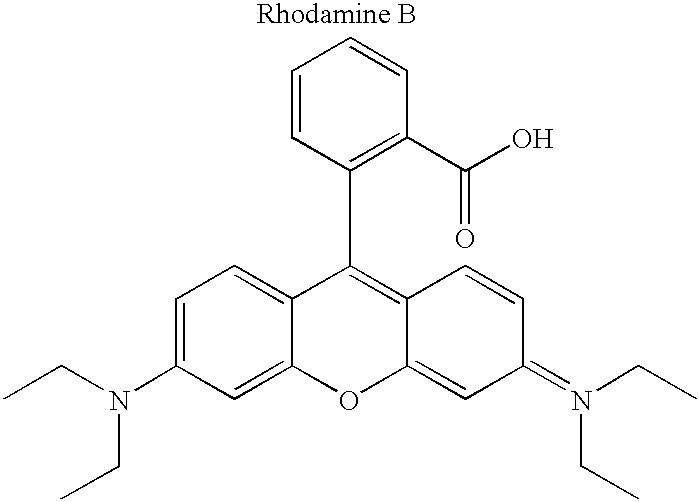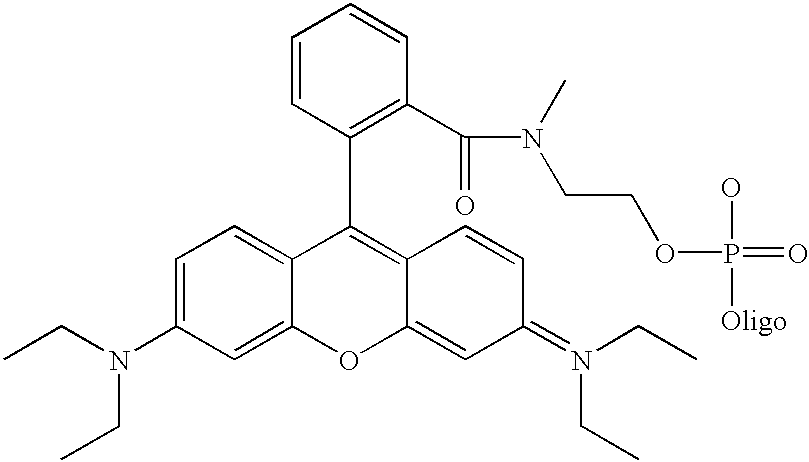Compositions and methods for labeling oligonucleotides
- Summary
- Abstract
- Description
- Claims
- Application Information
AI Technical Summary
Benefits of technology
Problems solved by technology
Method used
Image
Examples
example 1
[0060] Although not limited to any particular mechanism, in general terms, the process of the current invention consists of a two step, solid-phase reaction. In the first step, a support-bound, fully-protected oligonucleotide is reacted with bifunctional linker arm where one functional group is suitable for coupling with the 5' hydroxyl group of the oligonucleotide and the second functional group is suitable for coupling with an available functionality on the label compound. If required for chemical compatibility, the second functional group may bear a removable protecting group. After removal any protecting groups, the second functional groups is then coupled with a labeling compound to produced a labeled oligonucleotide. While it is preferred in some situations to use a carboxyl containing label and a linker that consist of a phosphoramidite for coupling to the oligonucleotide and a protected amine for coupling to the label (see, for example, FIG. 3), other functional groups are c...
example 2
[0065] In the following set of experiments the versatility of the solid phase approach is illustrated by the use of other amine-reactive labels, isothiocynates and sulfonyl chlorides with the amino / phosphoramidite linker. This is a three-step process where the amino group of the linker arm is first reacted with succinic anhydride and then reacted with an amino label and an example of a hydroxyl label coupled via a bisphosphoramidite.
[0066] Isothiocyanate Labels
[0067] Reactions were carried out in dry DMF / 10% triethylamine at a label concentration of 0.2 M. Coupling was affected by exposing the solid support to 50 .mu.l of the coupling mixture for 1 hour at ambient temperature. Free label was removed by repeated washing with DMF followed by acetonitrile. Labeled oligo was cleaved from the solid support by exposure to 0.4 M NAOH in 4:1 methanol / water for 16 hours at 27 degrees C. Labeled oligo was isolated by standard gel filtration techniques.
PUM
 Login to View More
Login to View More Abstract
Description
Claims
Application Information
 Login to View More
Login to View More - Generate Ideas
- Intellectual Property
- Life Sciences
- Materials
- Tech Scout
- Unparalleled Data Quality
- Higher Quality Content
- 60% Fewer Hallucinations
Browse by: Latest US Patents, China's latest patents, Technical Efficacy Thesaurus, Application Domain, Technology Topic, Popular Technical Reports.
© 2025 PatSnap. All rights reserved.Legal|Privacy policy|Modern Slavery Act Transparency Statement|Sitemap|About US| Contact US: help@patsnap.com



